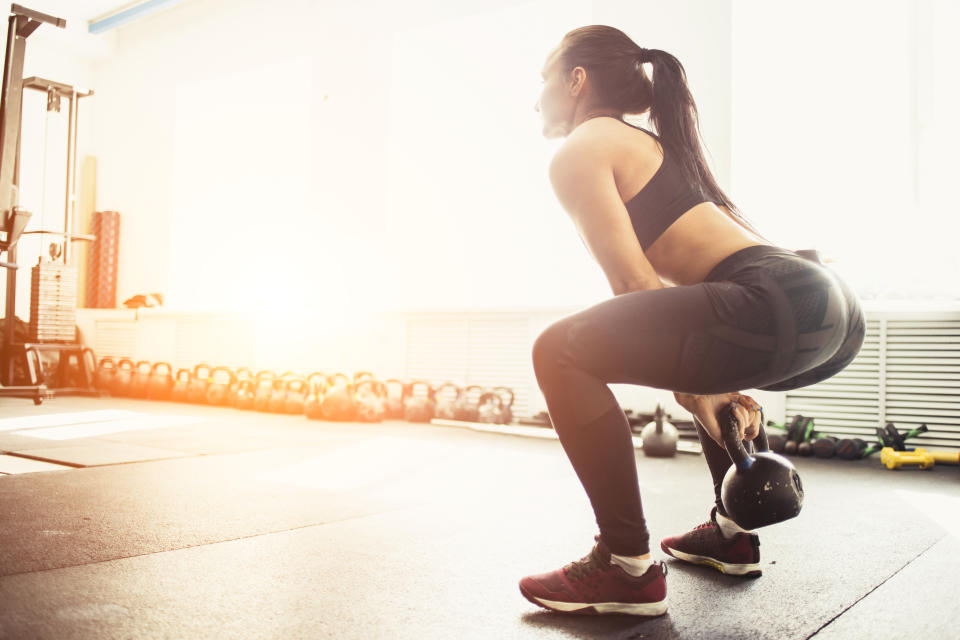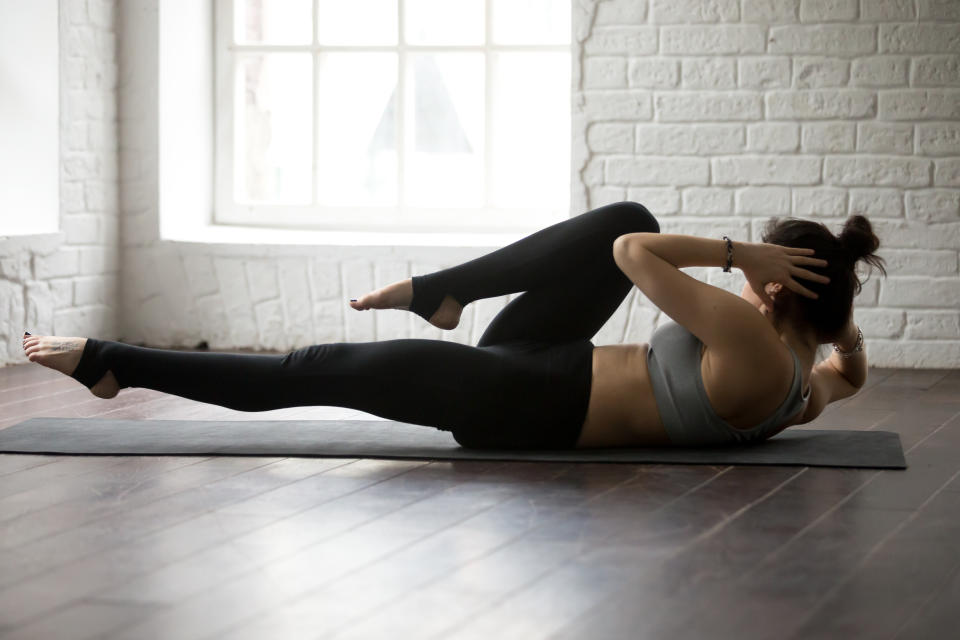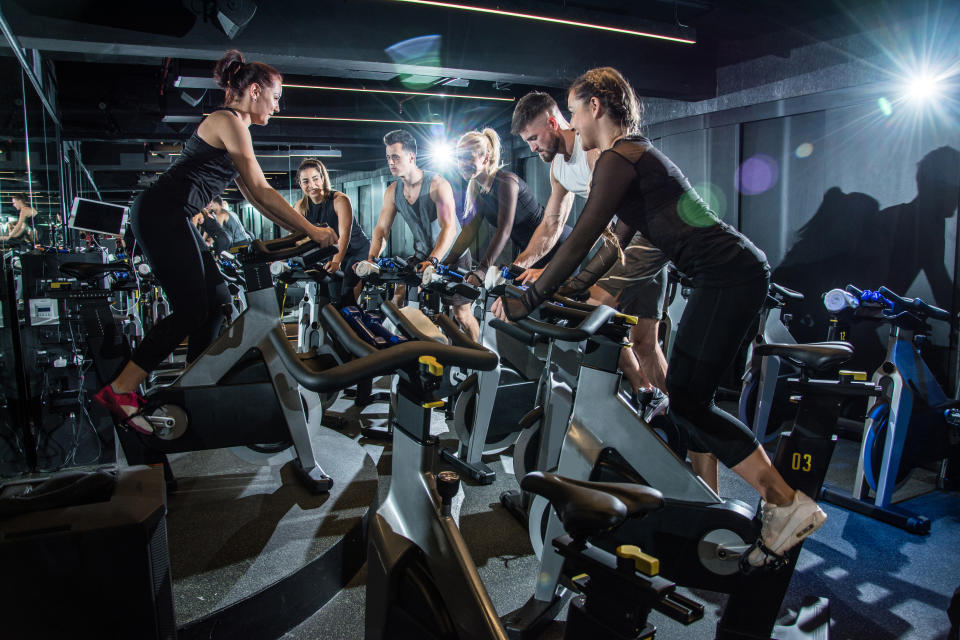This Is How You Should Recover After Your Favorite Kind of Workout

Everyone has a different way that they love to get those feel-good, sweaty endorphins in. Maybe you’re a big runner, and get a rush from sunrise drenched miles with the company of a good friend. Or perhaps, you’re a dedicated hot yogi who adores nothing more than a drenched Savasana, a designer crop top, with some acoustic guitar playing in the background. Regardless of your go-to workout, there’s one thing that’s irrefutable: if you’re getting those endorphins without taking the proper amount of time to rest and recover—you could me making a major mistake.
“Stress plus rest equals growth,” Dan Giordano, DPT, CSCS, and co-founder of Bespoke Treatments in New York City, tells SheKnows. “This equation can be true for anything you want to grow. If you load your body with too much stress without rest, you will become prone to injury, illness, burnout.”
Related stories
6 Fitness Apps to Download ASAP (Because Summer is Sooner Than You Think!)
9 Endometriosis Symptoms You Shouldn't Ignore
The Surprising Reason You Should Treat Screen Time the Same Way You Treat Food
Granted, different workouts place different amounts of stress on the body. Here, we connect with top experts for their suggestions of what kind of recovery pairs best with five different popular kinds of fitness.
Yoga

Intensity meter: 3 to 6
Recovery method: Hydrate
Yoga can vary drastically in intensity. Some women lean into the ancient practice on an active rest day, stretching out tight muscles that could be a result from more intense fitness like Spin or running. Others make it their pick for really cranking up the heat, leaning into hot power yoga or other constantly-moving flows to kick up their heart rate. Regardless of your flow style, hydration post-yoga is an essential recovery strategy.
“Rehydration is as important as prehydration, since our body is comprised mostly of water,” Bethany Lyons, founder of Lyons Den Power Yoga in New York City, tells SheKnows. “When you take a sweaty yoga class you lose water and electrolytes through this natural cooling process and the healthy balance of those two is essential to maintaining well-functioning systems in the body. Dehydration can lead to lightheadedness, confusion, dizziness, and headaches.”
A good rule of thumb for hydration strategy? For every pound you lose, rehydrate with 16 to 20 ounces of water, Tina Marinaccio, MS, RD, CPT of Health Dynamics LLC in Morristown, New Jersey, tells SheKnows.
Running

Intensity meter: 5 to 8
Recovery method: Stretching
There’s a drastic difference between a light jog and all-out sprint work. As opposed to yoga, running places a lot more stress on the body because of the impact with the ground. Runners are known to have lingering tightness throughout the legs and lower back, all of which can be assisted with good-quality stretches.
“Post-run stretching is a great reset post-workout,” Rich Velazquez, coach and COO at Mile High Run Club in New York City, tells SheKnows. “As we run, we settle into movement patterns that are determined by terrain, traditional behavior (AKA your desk job) or even general fatigue. In order to return back to a neutral state, stretching is definitely recommend.”
This will help to elongate the fascia (your important connective tissue under the skin), maintain mobility at the joints, and decompress the body. Additionally, movement post-run will encourage blood circulation which will decrease any potential soreness, says Velazquez. Make sure all stretching before activity is fluid and post-effort is static, or still. Hold static stretches for between 20 and 30 seconds to really get into those muscles.
High Intensity Interval Training (HIIT)

Intensity level: 7 to 10
Recovery method: Bolthouse Farms Protein PLUS Chocolate
Research shows that most people genuinely enjoy interval training, because they feel as though they can get a really solid workout in little time. And it’s true: HIIT workouts are quick, can stoke the metabolism, and improve cardiovascular fitness and endurance. “HIIT builds lean muscle mass while also losing fat at the same time,” Giordano says.
“When you workout you slightly damage your muscles, you stress them as much as you can, and then soon enough, delayed onset muscle soreness may kick in,” the trainer adds. From there, he says your body starts to repair itself within 48 to 72 hours.
A great way to assist the process? Refuel your body right. With 30 grams of protein per 15.2-oz. bottle, Bolthouse Farms Protein PLUS Chocolate is a great grab to give your muscles the TLC they really crave. The bottle also touts 70 percent of your daily recommended value for calcium, 35 percent of your folate and 45 percent of your vitamin D, as well as 21 vitamins and minerals, including Essential B’s.
Pilates

Intensity level: 6 to 8
Recovery method: Foam rolling
Pilates is a low-impact exercise that places a major focus on muscle strengthening while improving flexibility and alignment, and can be done on a mat or the reformer. Eight weeks of Pilates classes can improve flexibility, balance, and abdominal endurance, according to The Journal of Sports Medicine and Physical Fitness. And although you’re not crushing through HIIT intervals with squat jumps or burpees, the small movements involved will likely make you super sore the next day. That’s where the foam roller comes in.
“Foam rolling can increase muscle flexibility, which means you can perform your workouts more efficiently and with better form,” Caitlin Krause, Instructor at SLT and stretcher at Stretch*d, tells SheKnows. “In Pilates, form is everything. Proper form not only protects you from injury, but it allows you to get the highest benefit for your time by increasing the quality of every exercise you do.”
Foam rolling assists in breaking up muscle adhesions or knots, and also normalizes the blood flow to the muscle. Releasing these these trigger points helps to re-establish proper movement patterns and enhance performance, says Krause.
Spin

Intensity level: 7 to 10
Recovery method: Take a bath
A spin class is the perfect opportunity to tune out the outside world, crank up the music, and just ride. With all that pushing and pulling of the pedals, you’re getting a great cardio workout and also building essential strength. After you get out of the saddle, a bath can be a great way to unwind and recover. “A warm bath post-workout feels great,” Jamey Powell, instructor at SWERVE Fitness in New York City, tells SheKnows. “Heat can help regulate blood flow in the body and loosen up soft tissue.”
As for topical salves and bath add-ons, Powell says take them with a grain of (epsom) salt. The skin is a pretty tough barrier to get through by design, so the legitimacy of products like magnesium salts and menthol balms is questionable. That being said, a little placebo effect never hurt anyone.
The catch: baths are a pretty short-term solution when it comes to muscle relief (assuming you’re only averaging around 15 minutes in a bath). Alternating between a hot and cold bath may have a more positive effect on recovery time, according to French research.
This post was created by SheKnows for Bolthouse Farms.
Sign up for SheKnows' Newsletter. For the latest news, follow us on Facebook, Twitter, and Instagram.